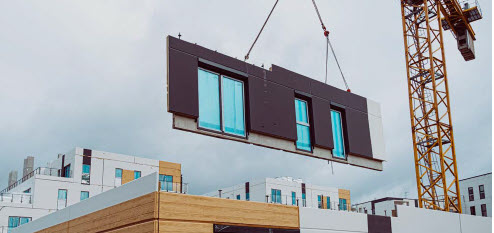Prefabrication is one strategy that has gained traction within construction and allows a team to mature from managing pure site-built projects, the vast majority of developments happening today, to an off-site manufacturing and assembly approach.
Moving construction processes off site into a prefab shop offers nominal advantages. The controlled environment permits work to continue regardless of inclement weather, quality is improved in a controlled environment, and skilled labor can be concentrated in the warehouse while unskilled labor can be deployed to perform on-site assembly.
While prefabrication solves some logistical problems, it also carries some critical limitations. Prefabricated components are limited to a maximum size and weight since they still must be transported to the jobsite. This process creates two locations to control because some assembly work happens in the prefab shop, while other activities take place on the construction site. These logistical issues increase the cost of large, low-density prefabricated assemblies.
FINANCIAL SINKHOLES LURK WITHIN TRADE-BASED STRATEGIES

This article is excerpted from THE PRODUCTIZATION EFFECT: How integration-ready modules will transform the roles of general contractors, specialty contractors and the entire construction value chain. This white paper maps the path to productization and defines how general contractors, specialty contractors and the entire construction value chain can leverage virtual twins on an end-to-end collaboration platform, transcend the limitations of classic industrialization and leapfrog to personalized construction.
RELATED LINKS
- Dassault Systèmes Construction Solutions
- Integrated Built Environment for collaboration& project management
- Building Design for Fabrication for digital continuity
- Build Smarter and Greener for Sustainable Construction
- Building Tomorrow

